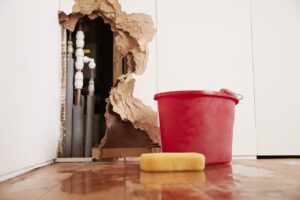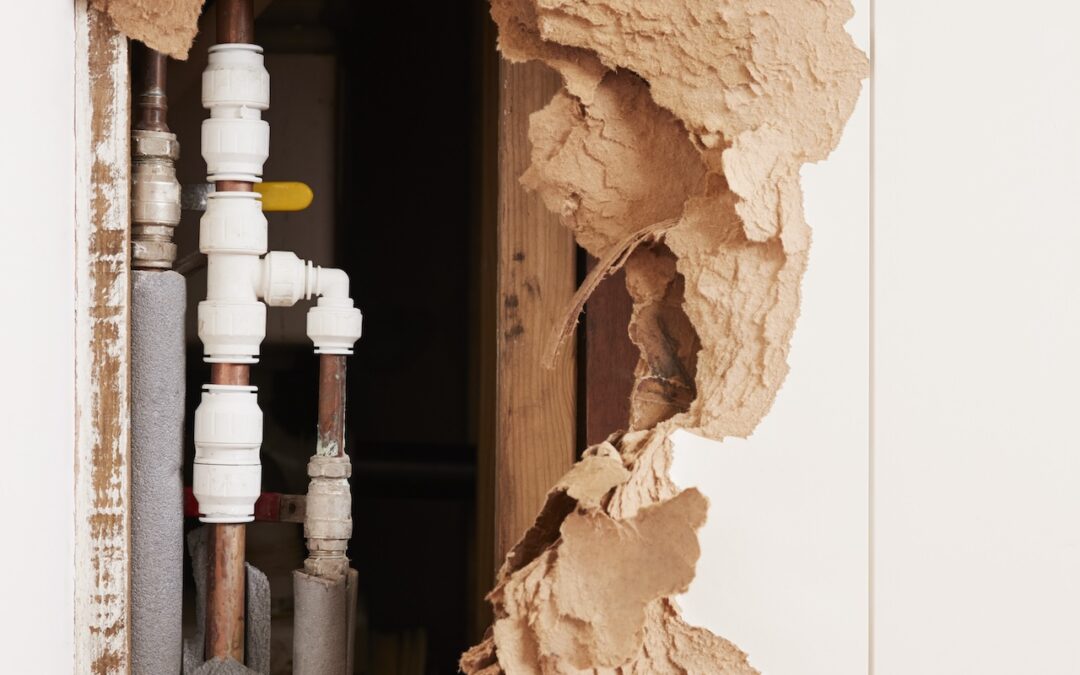A Practical Guide to Water Damage Cleanup
Integrity Restoration & Remodeling understand that you may be facing water damage but have no clue how to deal with it. You’re not alone! Water damage can swiftly escalate from a minor issue to a severe problem if not addressed—but with the right knowledge, you can act quickly to save your property. This guide will take you through the essential steps of water damage repair and provide practical tips to make the process as smooth as possible.
Your Guide to Water Damage Repair
 Water damage can be caused by flooding, storms, burst pipes, faulty appliances, and even human error (like forgetting to turn the tap off). Whatever the cause, prompt action, and proper cleanup techniques will minimize the damage.
Water damage can be caused by flooding, storms, burst pipes, faulty appliances, and even human error (like forgetting to turn the tap off). Whatever the cause, prompt action, and proper cleanup techniques will minimize the damage.
Step 1: Get Professional Advice Before Starting
The first step to tackling water damage is to call a professional restoration company. They’ll have the expertise and equipment to handle water damage effectively. These experts will also assess the extent of the damage and provide you with a detailed plan of action.
Step 2: Perform a Water Damage Inspection
Before cleaning, assess the damage and determine where the water has seeped. Once you know the extent of the damage, you can prioritize your actions and take caution in potentially hazardous areas. If you’re unsure of how to measure the damage, wait for the experts to bring specialized meters. Turn off the electricity and gas supply before entering the affected area.
Step 3: Remove Standing Water
If there is standing water in your home, remove it as best you can. This will help prevent further damage and minimize the risk of mold growth. If the water damage is too severe or you don’t have the necessary equipment, it’s best to leave this step to the professionals.
Step 4: Dry and Dehumidify the Area
After removing the standing water, you’ll need to dry out the affected area. Use fans and dehumidifiers to circulate air and absorb moisture. This kind of remediation can take 3-5 days, but keep an eye on the area for signs of structural damage regardless.
Step 5: Remove Damaged Items
Unfortunately, some items may be beyond water damage repair and need to be discarded. Remove these items quickly to prevent mold growth and further damage. Fortunately, if professionals are on the way, they can clean severely damaged furniture and carpets.
Step 6: Clean and Sanitize Surfaces
To prevent health hazards, it’s essential to thoroughly clean and sanitize the affected areas as soon as possible. Water damage can cause bacteria, fungi, and other harmful microorganisms to grow in your home within 72 hours. When harmful bacteria have already started to form, no regular household cleaner can help—experts have professional equipment to mitigate bacterial growth properly.
Step 7: Restore and Replace Damaged Property
Once everything is dried, cleaned, and sanitized, it’s time to restore and replace any damaged property. Depending on the damage, you might need to repair walls, replace flooring or furniture, and repaint affected areas.
Sound Too Hard? Integrity Restoration Offers Professional Water Damage Repair
Water damage repair can be an overwhelming and challenging task for homeowners. If you need help with water damage cleanup, trust the experts at Integrity Restoration to handle it for you. Our team of professionals is equipped with the latest equipment and techniques to restore your property to its pre-damaged condition.

